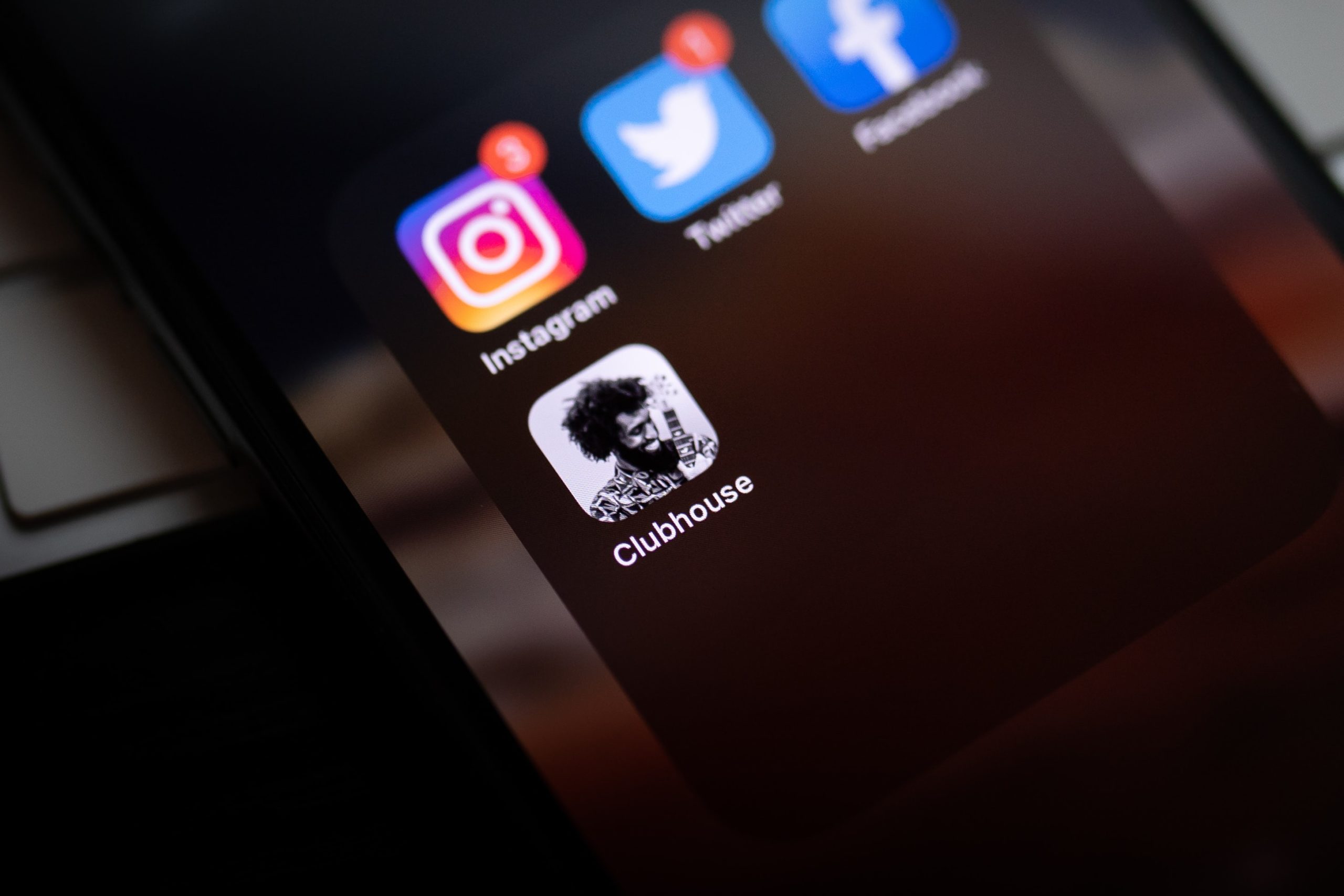Audio Marketing
Are Consumers Tuned In To Social Audio?
CONTACT
hello@stagwellglobal.com
SIGN UP FOR OUR INSIGHTS BLASTS
Amid the global consumer craving for new experiences driven by the pandemic, social audio bloomed in popularity through 2020 and 2021. A year later, some of the buzz around the platform driving the trend – Clubhouse – has fizzled, but experiments in the space from key social platforms like Twitter and Reddit, and audio superstar Spotify, show there’s still terrain to be mapped. But are consumers into social audio? What opportunities does the content create? And what are the barriers to widespread adoption and growth that brands should be on the lookout for? Stagwell’s experts from KWT Global, HUNTER, and Meat & Produce address where social audio is headed in 2022.

Niche Will Drive the Social Audio Experience
Jessica Spar, SVP, Digital, KWT Global
Social audio isn’t going anywhere any time soon, but the bigger questions are: Who is tuned in? And where? Clubhouse was meant to be the next big thing, but its fifteen minutes of fame have passed. Was this because the format didn’t ultimately have long term potential? Or because it was a good idea with poor execution? Twitter Spaces seems to be banking on the latter, yet with significant shifts in the cultural and social landscape over the last few years, Twitter may not be primed for the success it expects.
 Twitter is counting on mass appeal for Twitter Spaces based on its 300 million+ monthly users. However, the masses are moving in a different direction – younger audiences are increasingly leaning into Instagram and TikTok as their platforms of choice, with video as the dominating medium. Social audio has a completely different definition on these platforms. Where Clubhouse and Twitter Spaces focus on live conversation, TikTok and Instagram’s definition of social audio includes everything from audio remixes to sharing the latest sound trends, which doesn’t require the same level of focus, attention, and participation as the live conversational formats of Clubhouses and Twitter Spaces.
Twitter is counting on mass appeal for Twitter Spaces based on its 300 million+ monthly users. However, the masses are moving in a different direction – younger audiences are increasingly leaning into Instagram and TikTok as their platforms of choice, with video as the dominating medium. Social audio has a completely different definition on these platforms. Where Clubhouse and Twitter Spaces focus on live conversation, TikTok and Instagram’s definition of social audio includes everything from audio remixes to sharing the latest sound trends, which doesn’t require the same level of focus, attention, and participation as the live conversational formats of Clubhouses and Twitter Spaces.
To succeed, Twitter Spaces will need to rely on highly engaged niche interest groups, which is a model already owned by Reddit. As a platform founded on niche interest groups, Reddit is now throwing its hat into the social audio ring as well with Reddit Talk. Reddit could succeed where Clubhouse failed (and Twitter Spaces seems to be failing), as they have the framework for success built into their platform already. The platform’s subreddit model and moderation policies lend themselves well to a similar setup for live audio discussion. Clubhouse, on the other hand, was still working through the right setup for rooms when users started to lose interest, and Twitter’s struggles have come in on the moderation side of things. Without clear moderation frameworks, brands may find social audio experiences too risky.
All to say, no clear winner has emerged in the social audio game when it comes to live conversation, so it will be interesting to see which platform, if any, can get it right!
Platform Investment Means Social Audio is Here to Stay
Michael Lamp, Chief Digital Officer, HUNTER
Despite Clubhouse’s fizzle-out, there’s still a ton of heat around social audio. Twitter Spaces has outpaced all its other recent innovations and is driving a lot of thumb-stopping based on the way live Spaces appear in the mobile app (à la IG Stories…just begging to be clicked). Spotify launched its version of audio rooms – Greenroom – in July of 2021 and Facebook continues to promote its Live Audio Rooms with select Creator partners.
 Perhaps most indicative of Social Audio’s staying power, though, is Reddit’s offering: Reddit Talk. A mobile-only product for a while, it rolled out to the web version just this year, adding several new features, including the ability to listen to recorded sessions.
Perhaps most indicative of Social Audio’s staying power, though, is Reddit’s offering: Reddit Talk. A mobile-only product for a while, it rolled out to the web version just this year, adding several new features, including the ability to listen to recorded sessions.
Beyond these specific products offered by existing platforms, the broader trend of sensorial social is what we’re watching, buoyed by the staying power of podcasts, ASMR and long-form, audio-as-video content. From sight to sound to virtual realities in the metaverse simulating touch, where will the fight for consumer attention take us next?
Content Creators Hold the Key for the Future of Social Audio
Christine McDermott, VP, Meat & Produce
Amidst the “we’re all in this together” enthusiasm of 2020 (remember after work Zoom drinks? Yea, sorry to remind you…) friends, families and companies jumped into the online world headfirst. The need for connection, exacerbated by the pandemic, was real but screen fatigue quickly set in. This combination created a gateway for an explosion of audio content. While it appeared to have been spurred on by our “unprecedented times,” the audio movement had been building for years with the groundwork laid by the increasing popularity of podcasts.
 This brings us back to Clubhouse: despite downloads having plummeted after the initial hype, every major social platform has continued to invest in the development of audio. Think Twitter Spaces, Facebook Live Rooms and Spotify Greenroom. Notably, the names of these efforts focus on referencing physical locations, highlighting the opportunity audio provides for greater connection and inclusion across hybrid brand ecosystems. Even LinkedIn has recently jumped on the bandwagon, extending their live events to include audio-only events. Audio-only can level a playing field in terms of providing engagement opportunities without judgment on appearance or location (i.e. no need for staged Zoom backgrounds…)
This brings us back to Clubhouse: despite downloads having plummeted after the initial hype, every major social platform has continued to invest in the development of audio. Think Twitter Spaces, Facebook Live Rooms and Spotify Greenroom. Notably, the names of these efforts focus on referencing physical locations, highlighting the opportunity audio provides for greater connection and inclusion across hybrid brand ecosystems. Even LinkedIn has recently jumped on the bandwagon, extending their live events to include audio-only events. Audio-only can level a playing field in terms of providing engagement opportunities without judgment on appearance or location (i.e. no need for staged Zoom backgrounds…)
No social form of social media is an island, or could possibly exist in isolation, and thus the popularity of audio has bloomed beyond audio-only channels. For years, the advice brands and agencies heard from Facebook was to design content for sound-off as well as sound-on. This was based on the insight that most users would consume content while silently scrolling through feeds. Now users discover cultural moments by tapping into trending audio on TikTok; the audio content drives the cultural relevance consumers are seeking in their entertainment consumption.
The key to the future of audio lies in the hands of creators, both from a platform and consumer perspective. The possibilities here are immense: since it is more cost effective to create high-quality audio than video, audio’s proliferation will enable new and underrepresented voices to enter the mainstream. Additionally, audio content and interactions allow for deeper discussions around key issues we face today while simultaneously enabling a greater level of empathy to be built between listeners. Imagine the nuance that voice provides enhancing conversation and discourse, as opposed to the impersonal, text-based comment battles we see across social media so often. Through strategic creator partnerships, our brands can find authentic ways to enter the conversations that are matter to their consumers.
With the ongoing evolutions we are seeing in this space – from increasing formats and channels to greater accessibility options – audio will continue to play a more important role in our social mix, from channel planning to creative development.
Related
Articles
In the News, Press Releases
Jul 09, 2025
STAGWELL LAUNCHES STAGWELL MEDIA PLATFORM (SMP), A CENTRALIZED TEAM OF GLOBAL MEDIA, TECHNOLOGY AND DATA INVESTMENT EXPERTS

Artificial Intelligence, In the News, Marketing Frontiers, Press Releases, Stagwell Marketing Cloud, Tech
Jun 12, 2025
PRophet, a Stagwell (STGW) Company, Completes Integration of UNICEPTA, Launches Unified Brand and Enhanced Media Intelligence Offering

In the News, Marketing Frontiers, Press Releases, Stagwell Marketing Cloud, Tech
Jun 11, 2025
The Marketing Cloud Launches Cutting-Edge Platform to Simplify Marketing Workflows





